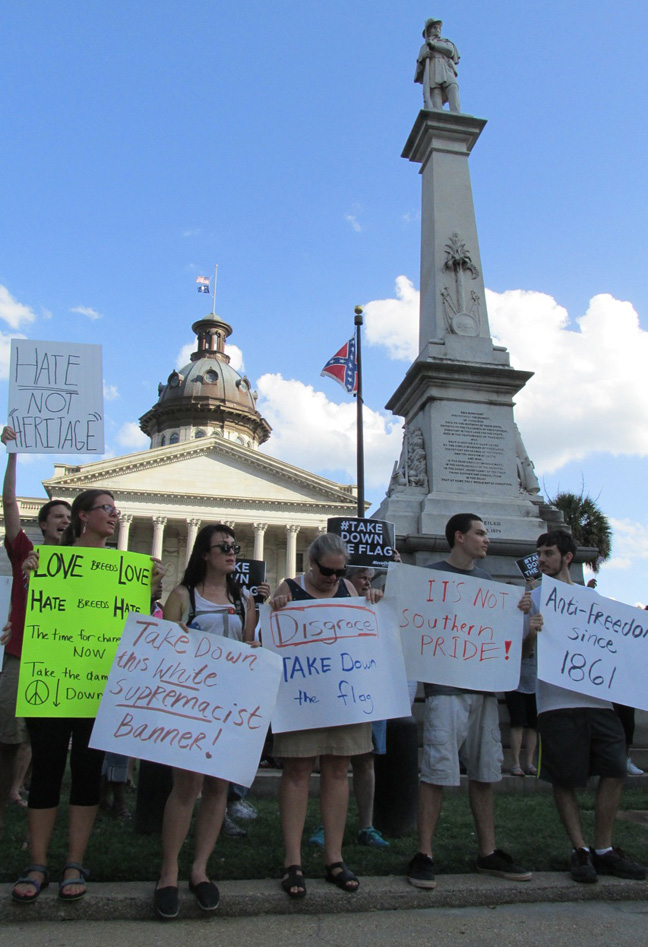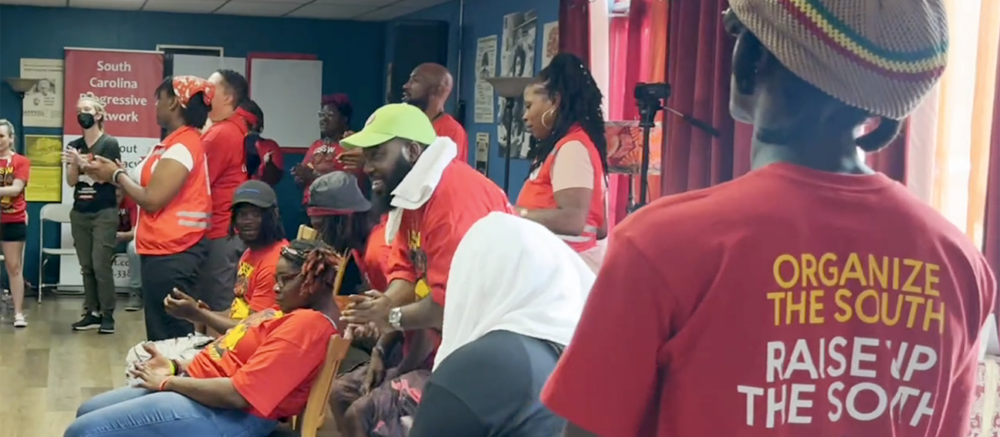Becci Robbins
Communications Director, SC Progressive Network
Since white supremacists terrorized Charlottesville and shocked an addled nation, there is growing demand to take down offensive monuments in public spaces. Pressure is building in South Carolina as well, so we thought it time to revisit the SC Progressive Network‘s position, drafted after the Confederate flag was moved off the State House grounds and amid subsequent calls to remove the Ben Tillman statue.
Our position remains that instead of removing offensive monuments we reinterpret them to accurately reflect the state’s painful history. As we said in 2015, “taking them down will not change the past, nor will it help future generations understand and change the institutionalized racism they inherit. We support telling the truth about our former ‘heroes’ with additional plaques that explain their role in using race and class oppression to retain wealth and power.”
This is a teachable moment, a chance for a deeper look at these edifices we usually pass by without notice. Instead of erasing history, we should expand our understanding of it. When and why were the monuments erected? Whose interests did they serve and at what price? And who, really, are these figures occupying places of honor on the State House lawn? Chances are most South Carolinians don’t know.
We understand that our position is not shared among all of our members or allies, and we respect those who disagree. There isn’t a single valid way to respond to the assault on our shared values of equality and fairness. But whatever your beliefs, please don’t let your outrage misdirect your energy. There is critical work to be done in South Carolina to address the sources rather than the symptoms of our problems.
Our State House is littered with statues honoring the architects of systemic racism, codified in our very constitution. But we cannot wave a magic wand to make the monuments disappear. In fact, only our lawmakers can take them down, and then by an unlikely two-thirds vote, thanks to the Heritage Act they passed to ensure their enduring control.
The question activists must ask ourselves is not whether offensive monuments should come down, but how much time and energy are we willing to spend to that end.
 Network bumper sticker, circa 1996
Network bumper sticker, circa 1996
At its founding conference in 1995, the Network identified racism as the state’s most crippling and pressing problem. We joined other South Carolinians of good will and spent the better part of two decades fighting to get the Confederate flag off the State House grounds.
But all the years of heated debate and public protest did not move a Republican-controlled legislature unwilling to risk alienating its conservative base. The rallies, marches, editorials, town halls, national boycott – all fell on deaf ears.
It took the murder of nine people in a Charleston church for lawmakers to finally take the flag down. Even when the dead included one of their own, Sen. Clemeta Pinckney, debate on the floor was vicious and divided. Ultimately, it was political expediency during a campaign season that made them finally furl the flag. Photos of the killer posing with a Confederate flag forced the GOP to address an issue they could no longer ignore or defend. Make no mistake; it was pressure from the national party, not a moral epiphany, that moved Gov. Nikki Haley to act.
She is the perfect example of the liability in removing symbols of white supremacy while leaving its systems and structure untouched. Lawmakers can proudly claim the moral high ground (finally) while continuing to implement policies that disenfranchise and marginalize the least of us.
 Watching the flag finally furled was a triumph, to be sure. But it came at a price. And what did it solve?
Watching the flag finally furled was a triumph, to be sure. But it came at a price. And what did it solve?
Since the flag came down, material conditions for the state’s most vulnerable citizens remain unchanged. Access to health care is uneven and inadequate. Public schools still struggle to offer our children minimally adequate education. The State House is embroiled in yet another corruption scandal. We are suffering the fallout from an irresponsible nuclear boondoggle that reflects a business-friendly political culture run amok. The state’s roads and dams are crumbling because lawmakers have starved infrastructure in the name of low taxes. The list is way too long.
So, yes, be outraged about the monuments, but choose your battles wisely. Statues never killed anyone; but public policy does so every single day.
Furthermore, symbols say a lot about who we are. As Modjeska Monteith Simkins said about the Confederate flag: Leave the damn rag up there. I’d rather see the Klan in sheets than in suits. As long as that flag flies from on top of that building you know what’s in the hearts of the people inside.”
• • •
The Network applauds those working to correct the historical narrative in South Carolina. To date, we know of plans for a poetry reading in front of the monument to Marion Sims, a visitation of the Tillman and Strom Thurmond statues by the New Legacy Project, and graduates of the Modjeska School are producing a tour of monuments on the State House grounds that is a departure from the one handed out in the gift shop.

